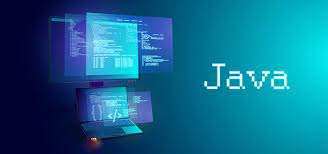Introduction:
Learning how to code can open up a world of opportunities and creativity. Java, one of the most widely used programming languages, is an excellent starting point for students who want to dive into the world of software development. In this beginner's guide, we'll walk you through the basics of Java programming, step by step, helping you build a solid foundation for your coding journey.
Table of Contents:
Getting Started with Java:
- Why Java? Understanding the importance and relevance of Java in today's technology landscape.
- Setting up your development environment: Installing JDK (Java Development Kit) and an IDE (Integrated Development Environment).
- Writing your first Java program: The classic "Hello, World!" example.
Understanding Java Fundamentals:
- Variables and data types: Declaring and using variables to store different types of data.
- Operators: Performing arithmetic, logical, and relational operations.
- Control structures: Using if statements, loops (for, while), and switch cases to control the flow of your program.
Functions and Methods:
- Introduction to methods: Writing and calling methods to organize your code.
- Parameters and return values: Passing data in and out of methods.
- Scope and visibility: Understanding variable scope and access modifiers.
Arrays and Collections:
- Arrays: Storing and manipulating multiple values in a single variable.
- ArrayList: Dynamic arrays for storing collections of data.
- Iterating through collections: Using loops to access and process array elements.
Object-Oriented Programming (OOP) in Java:
- Classes and objects: Defining classes, creating objects, and understanding their relationships.
- Encapsulation, inheritance, and polymorphism: Key concepts of OOP.
- Constructors and instance methods: Initializing objects and performing actions on them.
Exception Handling:
- Dealing with errors: Understanding exceptions and how to handle them gracefully.
- Try-catch blocks: Writing code to handle exceptions and prevent crashes.
File Input and Output:
- Reading from and writing to files: Working with external data sources.
- Using BufferedReader and PrintWriter: Efficiently reading and writing text files.
Introduction to Graphical User Interfaces (GUI):
- Basics of Java GUI: Creating windows, buttons, and text fields.
- Event handling: Responding to user interactions with GUI components.
Introduction to JavaFX (Optional):
- Creating modern UIs with JavaFX: Building interactive and visually appealing applications.
Putting It All Together: Mini-Project:
- Applying your knowledge: Developing a simple application that incorporates various concepts learned.
Conclusion:
Congratulations! You've embarked on a rewarding journey into the world of Java programming. By following this beginner's guide, you've gained a solid understanding of Java fundamentals, object-oriented programming, GUI development, and more. Remember that coding is a skill that improves with practice, so keep experimenting, building, and exploring new projects to continue your growth as a Java developer. Happy coding!





Comments